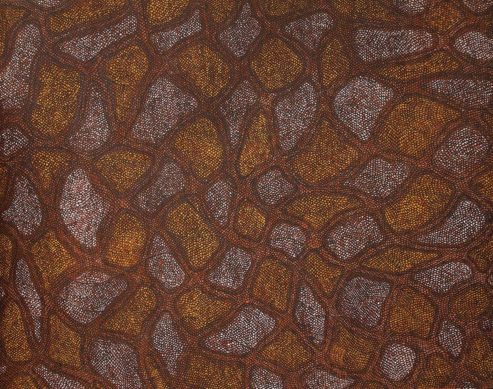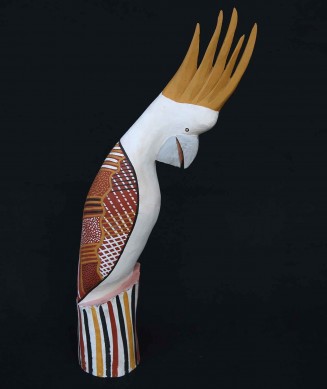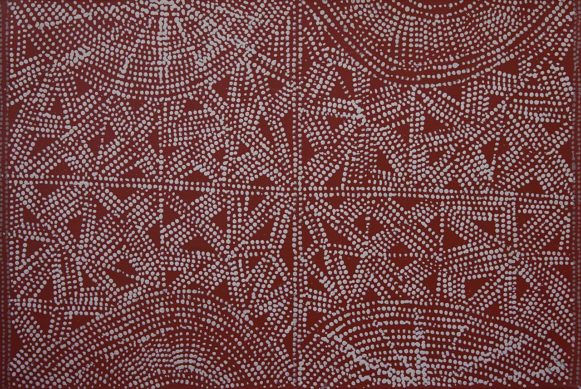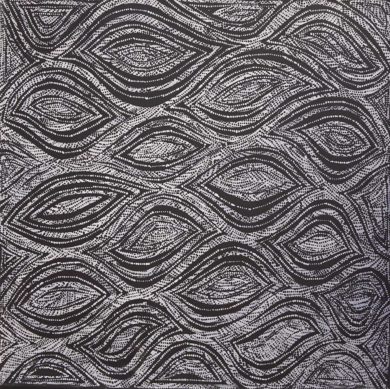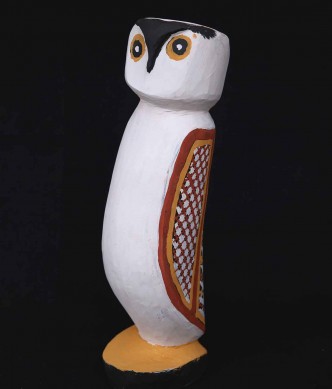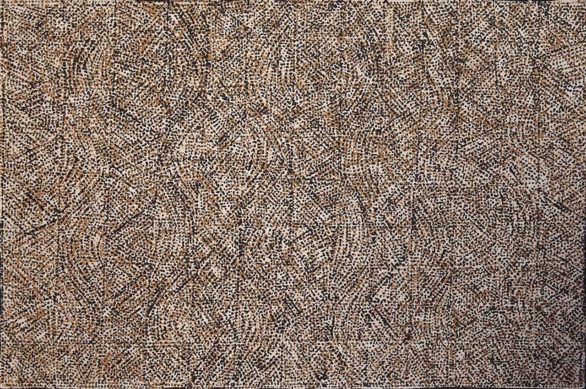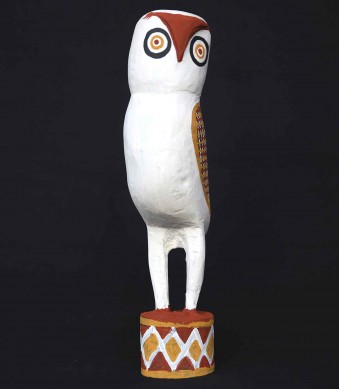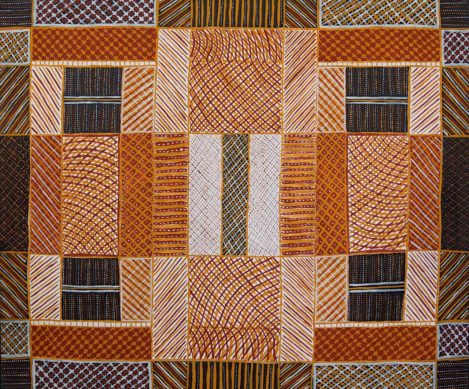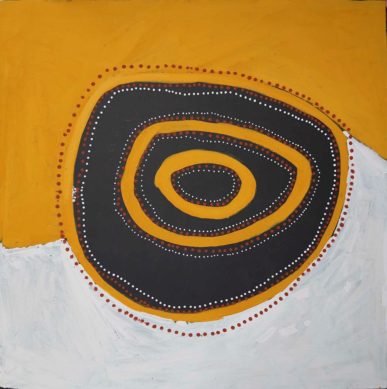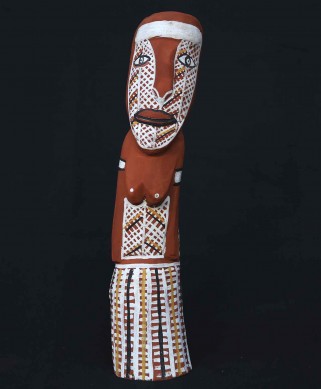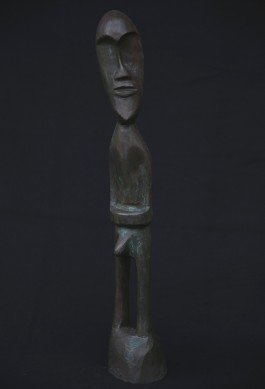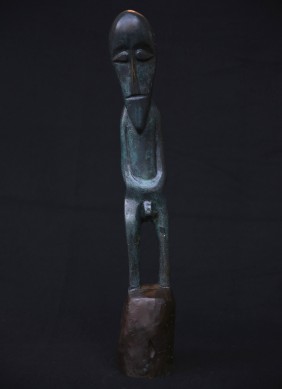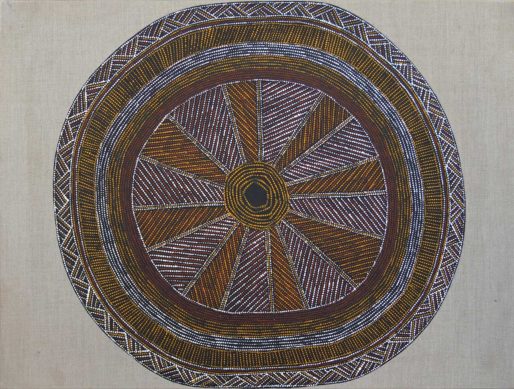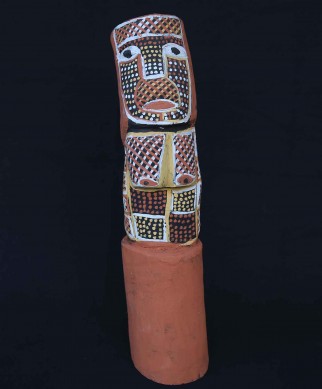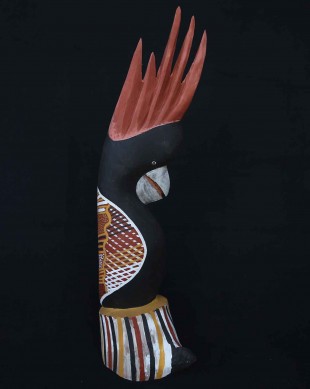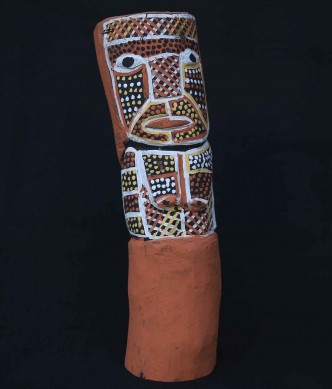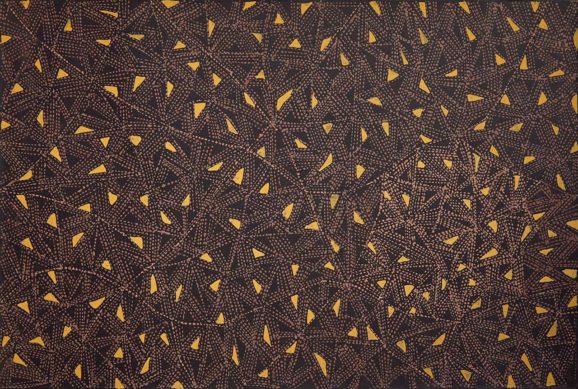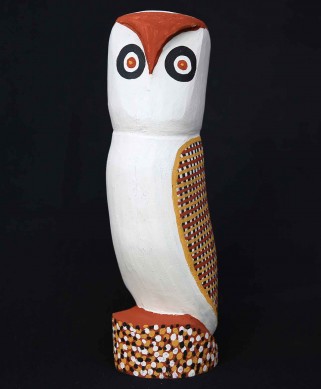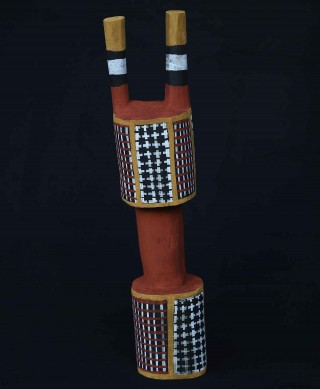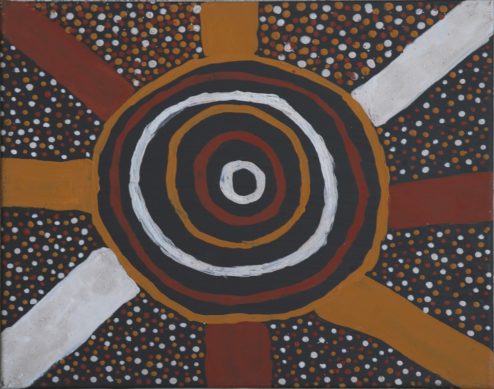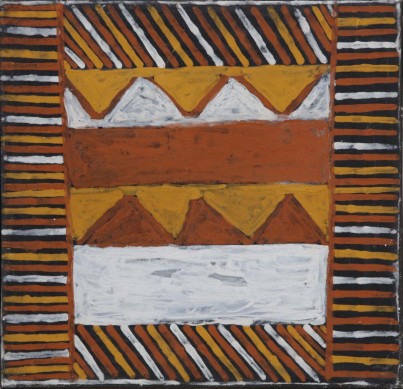Tiwi Islands Aboriginal Art
A selection of paintings showing the styles from this Aboriginal art region - some paintings may still be available for sale, while some may have been sold.
The Tiwi Islands, located in the Timor Sea 100km north of Darwin, are home to the Tiwi people and consist of two main islands, Melville Island, (5,788 sq kms) and Bathurst Island (2,200 sq Kms). The Apsely Strait divides the islands and separates them from the Australian mainland.
The Tiwi Islands lie in the tropical zone and Tiwi people identify three separate seasons – the dry season (smoke), the build up to the Wet (cicadas song) and the Wet (tropical storms). The seasons are the key to the Tiwi cycle of life, determining the availability of bush foods and the appropriate ceremonial rituals.
The Tiwi Islands are also the home of three separate art centres –Tiwi Design, Jilamara and Munupi Arts and Crafts. The signature style for Tiwi artists is deeply embedded in the cultural and ceremonial practices of the islands. Tiwi Design is located at the settlement of Nguiu on the south-eastern corner of Bathurst Island. Nguiu township is home to about 1500 people and the art centre began work in 1968, evolving a fabric printing business based on wood block printing. Today the art centre comprises a painting studio, wood carving area, pottery studio, screen printing studio, plus office and gallery.
Tiwi social structure is based on skin groups which are matrilineal, being inherited down the mother’s line and determining which future marriage arrangements are acceptable. The role of ceremonies is vitally important in Tiwi society as part of the oral cultural tradition. Ceremony format may vary due to the local circumstances and time, but remains embedded in the cultural tradition of the past. The dominant ceremonial events that are performed are the annual Kulama Ceremony and the Pukumani funeral ceremony.
The Tiwi Creation stories tell of the Palaneri, the Dreaming at the beginning of time, where the Tiwi Islands and people were created from the darkness that existed before. The cultural stories and ceremonies provide the basis for contemporary Tiwi art which includes painting, carving, sculpture and printing.

